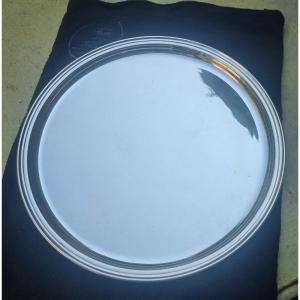Avocado-shaped shaker in its color with a circular base, without pedestal or foot, and a hemispherical body wider at the top, with two handles on the sides. They feature two confronting Cs of different sizes (the larger one on top) or in the shape of an S, and a decoration based on silver beads and a perched bird on top (both on the piece facing the center). In Spanish goldsmithing, Baroque trends continued for almost the first two-thirds of the 18th century, except in the capital, where Rococo forms were introduced without supplanting the previous ones. It was not until 1740 that French goldsmiths introduced these innovations in Madrid, which would slowly spread to the rest of the centers (as a rule), depending on the region and the masters. This survival of 17th-century forms is reflected in the handles of the tembladera, a decorative abundance (compared to the rest of the tasting container) that contrasts with the clean lines of the rest of the work, but which is common in this type of work. The absence of hallmarks does not allow us to locate the work or the artist, but this is precisely what argues in favor of a secondary goldsmithing center, where the lack of control over these works was more frequent due to the lack of masters and the means to ensure compliance with the marking rules. The piece has a beautiful engraving of initials on the front. Bernégales and tembladeras were the most common types of goldsmithing in 17th-century Spain (although they continued to be popular in the 18th century, especially in centers far from the main centers of creation). In the case of this piece, it is the handles that could indicate American manufacture, although there are similar pieces that would have been made in the Iberian Peninsula. Compare with works such as the tembladera by Antonio Sánchez dated between 1655 and 1689 and coming from the convent of the Mothers of Clarissan of Villacastín, others preserved in the National Museum of Decorative Arts of Madrid, etc.
Weight: 213 grams. - Dimensions: 18.5x15x8 cm










































 Le Magazine de PROANTIC
Le Magazine de PROANTIC TRÉSORS Magazine
TRÉSORS Magazine Rivista Artiquariato
Rivista Artiquariato